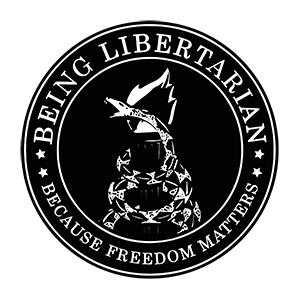The term “social justice” has become a buzzword. To provide a rebuttal to social justice in this article would be to repeat what has already been said countless times. Social justice as a concept seems so alien to the mindset of conservatives and libertarians (and similar ideologies) that it can sometimes be a struggle to understand the thought process of social justice, especially when terms like “equality” are used in two completely different (and often opposing) manners.
The Unconstrained View
To understand the mindset of social justice advocates, we must first understand the mindset of the unconstrained vision, as opposed to the constrained (or tragic) vision. Thomas Sowell’s A Conflict of Visions fully explains the constrained vs unconstrained dichotomy, but there are also numerous simpler summaries available.
Libertarians and conservatives tend to (but not always) fit into the constrained view, which sees humanity as tragic and flawed. They believe human characteristics are more rigid and less malleable. They focus more on incentive structures and systems (i.e. capitalism) that incentivize good acts and disincentivize bad acts. Because the constrained view is so focused on systems and processes, social justice isn’t a factor in this way of thinking.
The unconstrained view believes humanity is more malleable. Human nature can be molded and perfected based on the society they live in. Humanity is a blank slate, or tabula rasa, that is filled in by experience.
At this point, the flaws of the unconstrained view should be obvious, but if they aren’t, Steven Pinker conveys them in The Blank Slate.
This view is less system-oriented and more results-oriented. Conservatives and libertarians see the resulting distribution of wealth under a capitalist system as legitimate, because the process of the free market system gives it legitimacy.
The results are legitimate because of the system.
The unconstrained view is more concerned with the results themselves rather than the process. An equal distribution of wealth is the goal, and a system that leads to inequality is not legitimate.
The system is legitimate because of the results.
Definitions
Before making an argument, the terms used in the argument must be properly defined. Social justice, according to one definition, “maintains that all people deserve and should have access to the same rights and resources.”
On its surface, that doesn’t seem like such a bad idea. Equality is a good thing. But in this context, the definitions of “rights and resources” are more results-oriented from the perspective of the unconstrained view. These rights aren’t the right to self-ownership or property. These rights are the right to education, the right to healthcare, the right to food and shelter. These rights are about access to resources.
Another definition claims that social justice “is the equal access to wealth, opportunities, and privileges within a society.” This definition does talk about opportunity, yes, but not in the same sense as equality of opportunity is used with the constrained view. If some people have more money than others in a system where things cost money, that means some people have more access than others.
Racism, Sexism, and Social Justice
The major difference in the mindsets of social justice advocates and their opponents can be seen in the approach to racism and sexism. Both sides view the other as furthering racism and sexism.
The unconstrained view approaches prejudice by looking at results. They see a clear problem. In some parts of society, women only make up 30% while men make up the other 70%. There must be institutional prejudice in the works. Even if women’s person choices are leading to this outcome, we must remember that, according to the unconstrained view, human nature is malleable. Society must be influencing women in an unfair way that causes them to make choices that result in inequality.
This same view applies to race as well as gender. If one group is not proportionally represented, there must be institutional prejudice at work. Even if individuals are making personal choices that lead to different outcomes, it is society that is influencing them in a negative way.
This is why treating groups of people differently is not seen as racism or sexism in the social justice mindset. The results are what give the system legitimacy. If a system treats people differently based on race or gender, it is still legitimate and not at all prejudiced if the results are equal.
For the constrained mindset, the process is what matters. If the process treats people equally, the results are legitimate. Even if two groups are not proportionally represented, this could be due to human nature, personal choice, or other factors. As long as the system treats people equally, it is legitimate.
If you hold the constrained view, you should see the obvious flaws of a system that treats people differently to achieve an equal result. But this difference in mindset must be understood before it can be defeated. It can difficult to understand exactly what social justice advocates are for without an understanding of the mindset behind it.
This is not to justify social justice, or to support it, but to plainly acknowledge the perspective of its advocates so that its flaws are visible for all to see.








